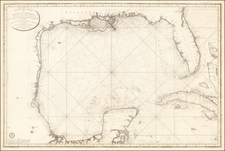Nice example of Giacomo Beltrami's important map of the Missisisppi River, published with the report of his expedition up the Mississippi River, to what he believed to be the River's source.
Giacomo Costantino Beltrami (1779 - 1855) was an Italian jurist, author, and explorer, best known for claiming to have discovered the headwaters of the Mississippi River in 1823 while on a trip through much of the United States (later expeditions determined a different source, however).
Beltrami arrived in the U.S. in December 1822 or January 1823, where he visited a number of different cities, before beginning a voyage down the Ohio River with the intention of following it to the Mississippi and then south to New Orleans. During the trip, he met with the prominent United States Indian agent, Lawrence Taliaferro, who was planning to travel upriver on the Mississippi. Beltrami soon became obsessed with the idea of finding the river's source. In 1823, the two later joined with Stephen H. Long as they traveled upriver to Fort St. Anthony.
Beltrami followed Long and Taliaferro as they went about exploring and mapping, and interacting with the local Native American tribes. However, in July, after about three months of this, tension began to grow between Beltrami and the others. He eventually split from their expedition in August, when the group had reached Pembina, and instead set off with some Ojibwe Indian guides on his personal quest to find the source of the river. After only a week and a half, his guides abandoned him and he had to carry on alone, seeking help from other natives he encountered.
At some point during this trip, Beltrami collected two indigenous flutes, which he later sent back to Italy along with his collection of Native American artifacts. One of these flutes provides us with the oldest extant Native American flute, and is now in the collection of the Museo Civico di Scienze Naturali in Bergamo, Italy.
On August 28, 1823, he found what he believed was the source of the Mississippi, as well as the Red River of the North. He named the place Giulia, and named eight other nearby lakes after her children. He then headed back down river toward New Orleans, arriving in December. In New Orleans, he began writing an account of his travels. By late January, it was completed, and it was published a few months later.
The map appeared in Beltrami's A Pilgrimage in Europe and America, Leading to the Discovery of the Sources of the Mississippi and Bloody River; With a Description of the Whole Course of the Former, and of the Ohio. . .









![[DeWitt Clinton Copy] An Account of Expeditions to the Sources of the Mississippi, and through the Western Parts of Louisiana, to the Sources of the Arkansaw, Kans, La Platte, and Pierre Jaun, Rivers During the years 1805, 1806 and 1807. And a Tour through the Interior Parts of New Spain. in the year 1807.](https://storage.googleapis.com/raremaps/img/small/81745.jpg)
![[Eastern Sheet -- Ohio] Post Road Map of the States of Ohio and Indiana with Adjacent Parts of Pennsylvania Michigan Illinois Kentucky and West Virginia Showing Post Offices With The Intermediate Distances and Mail Routes In Operation On the !st of February 1885 . . .](https://storage.googleapis.com/raremaps/img/small/44153.jpg)



